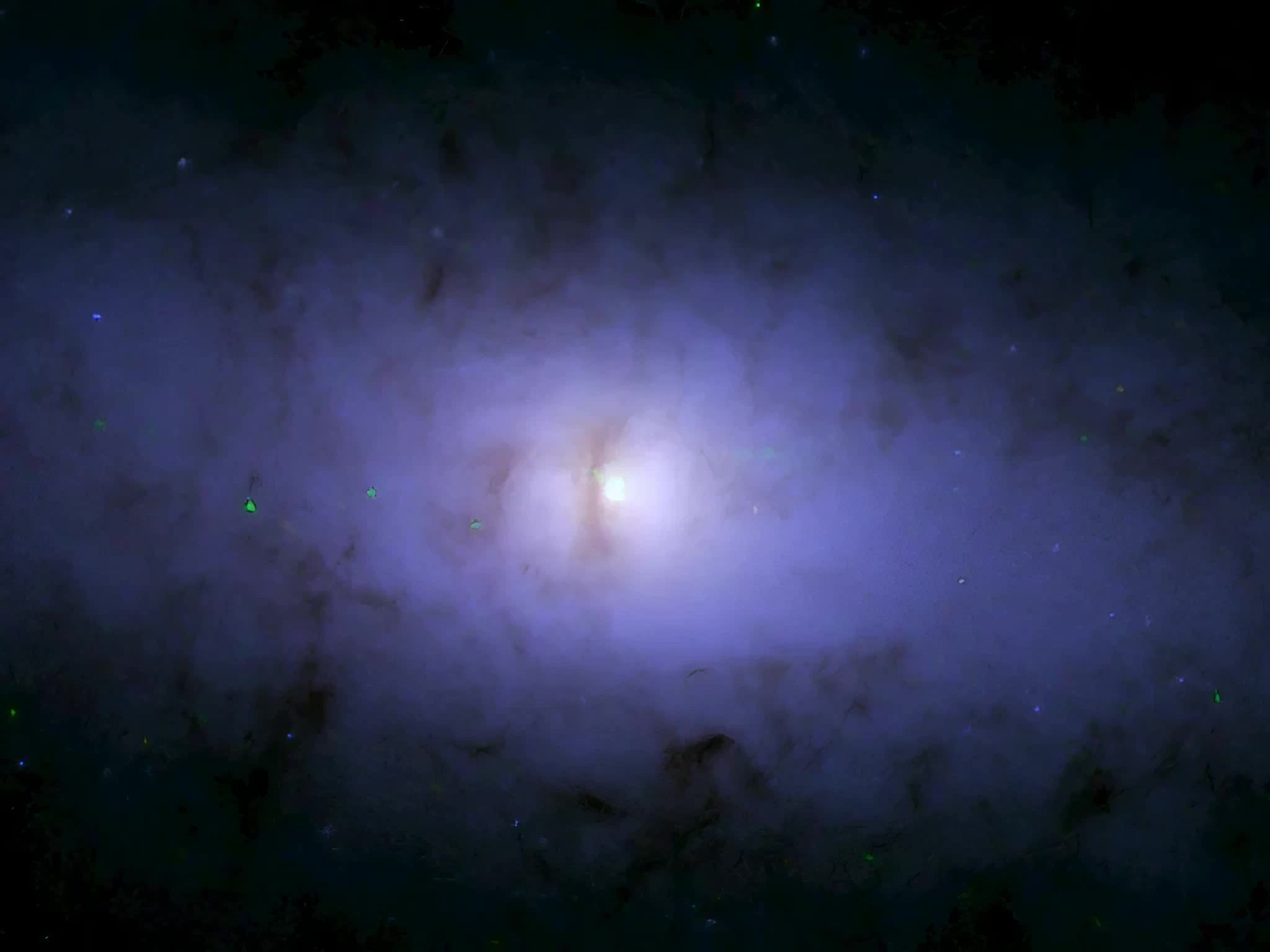NASA discovers bizarre "sideways" black hole in distant galaxy
The big picture: Scientists have uncovered a bizarre galaxy that appears to have gone through the cosmic equivalent of a road accident. Dubbed NGC 5084, the star system features not one, but two sets of energetic X-ray plumes shooting out from its core... and that's not even the strangest part. Buried in archival data from NASA's Hubble Space Telescope and other observatories, researchers discovered something else very unusual about NGC 5084: it appears to have a small, tilted disk of dust spinning around its center at a 90-degree angle to the galaxy's overall rotation. Researchers believe this means the inner disk is, "in a sense," lying on its side compared to the larger galaxy surrounding it.The team suspect that a major disruptive event or series of events must have significantly rearranged NGC 5084. They propose that this could have been caused by a violent collision with another galaxy or the eruption of superheated gas pushing out from the top and bottom of the galactic disk.According to lead researcher Amanda Borlaff, analyzing data across the electromagnetic spectrum was akin to examining forensic evidence from a crime scene. Combining the multi-wavelength clues revealed that NGC 5084 underwent dramatic changes relatively recently.Normally, large galaxies emit their X-ray energy evenly in a more or less spherical pattern. However, the presence of concentrated plumes suggests that something disrupted this typical state.The full findings were published on December 18 in The Astrophysical Journal. // Related StoriesCo-author Pamela Marcum said that finding two distinct pairs of these columnar X-ray features in a single galaxy is "exceptional," adding that their cross-shaped structure, combined with the tilted disk, provides unique insights into the galaxy's turbulent past.Even as the jumbled architecture of NGC 5084 remains perplexing, the fact that it was discovered at all highlights the power of modern techniques in extracting new discoveries from old data. Some of the observations date back nearly 30 years.In this case, the researchers enhanced extremely faint signals buried in the archival data by applying cutting-edge image processing, which revealed diffuse features that had previously gone undetected. This innovative technique is called SAUNAS (Selective Amplification of Ultra Noisy Astronomical Signal).All in all, while the root cause remains uncertain, solving the mystery of NGC 5084's remodeling promises to provide valuable insights into how galaxies transform through violent events.


